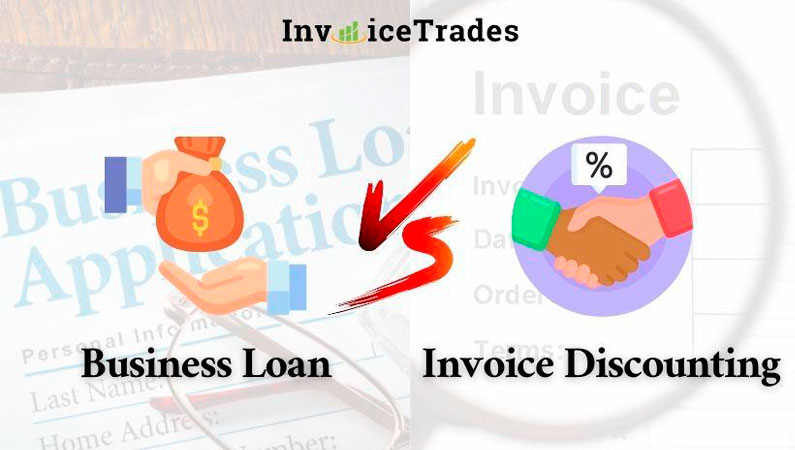
In the dynamic landscape of business financing making the right choice between a traditional business loan and invoice discounting can significantly impact the trajectory of your enterprise. Both avenues offer distinct advantages and considerations tailored to different business needs and circumstances. By understanding the nuances of each option, you can make an informed decision that aligns with your goals and fosters sustainable growth.
A business loan is a conventional form of financing wherein a lender provides a predetermined lump sum of capital to a business entity. This capital infusion is typically utilized to support various operational or strategic initiatives, such as expansion, inventory management, technology upgrades, or marketing efforts. The borrower agrees to repay the loan amount over an agreed-upon period usually with interest which serves as the lender's profit.
Business loans are characterized by their structured repayment schedules where borrowers make regular payments that include both principal and interest components. These loans may be secured or unsecured depending on the lender's risk assessment and the borrower's creditworthiness. Secured loans require collateral such as real estate or equipment to mitigate the lender's risk, while unsecured loans do not necessitate collateral but often come with higher interest rates.
| Aspect | Business Loan | Invoice Discounting |
|---|---|---|
| Definition and Concept | Lump sum of capital repaid over time. | Advance payment against outstanding invoices. |
| How it Works | Borrow fixed amount, repay with interest. | Receive cash upfront for unpaid invoices. |
| Pros | Flexibility in use of funds, predictable payments. | Improves cash flow, no new debt incurred. |
| Cons | Interest payments, may require collateral. | Requires existing invoices, fees involved. |
Invoice discounting offers an alternative approach to accessing working capital by leveraging a company's accounts receivable. Instead of waiting for customers to settle their invoices within the standard payment terms businesses can expedite cash flow by selling their unpaid invoices to a third-party financier at a discount. This allows them to access a portion of the invoice value upfront providing immediate liquidity to fuel ongoing operations or pursue growth opportunities.
Unlike traditional loans, invoice discounting does not entail taking on additional debt. Instead, it leverages existing assets—in this case outstanding invoices—to unlock capital that would otherwise be tied up in accounts receivable. The discount rate applied to the invoice reflects the financier's fee for providing the advance payment which is typically a percentage of the invoice value.
Several factors should be carefully considered when evaluating the suitability of business loans versus invoice discounting for your specific circumstances:
In conclusion, the choice between a business loan and invoice discounting hinges on a thorough understanding of your business's financial requirements, risk tolerance, and growth objectives. Invoice discounting through Invoice Trades presents a compelling opportunity for businesses to optimize cash flow, enhance financial flexibility and drive growth.
1. What is the main difference between a business loan and invoice discounting?
A business loan provides a lump sum of capital repaid over time with interest, while invoice discounting offers an advance payment against outstanding invoices.
2. How quickly can I access funds with invoice discounting compared to a business loan?
Invoice discounting provides immediate cash flow by advancing funds against outstanding invoices typically faster than the approval process for a traditional business loan.
3. Will my creditworthiness affect my eligibility for invoice discounting?
While business loans focus on the borrower's credit history, invoice discounting relies primarily on the creditworthiness of your customers, as it involves advancing funds against your outstanding invoices.
4. Are there any hidden costs associated with invoice discounting?
Invoice discounting involves discount fees applied to each invoice advanced, which should be factored into the total cost of financing, but there are typically no hidden costs beyond the agreed-upon fees.
5. Can I use invoice discounting if my business is relatively new or has fluctuating revenue?
Invoice discounting can be a viable option for businesses of varying sizes and stages as it provides immediate cash flow relief based on existing invoices, regardless of revenue consistency or business age.